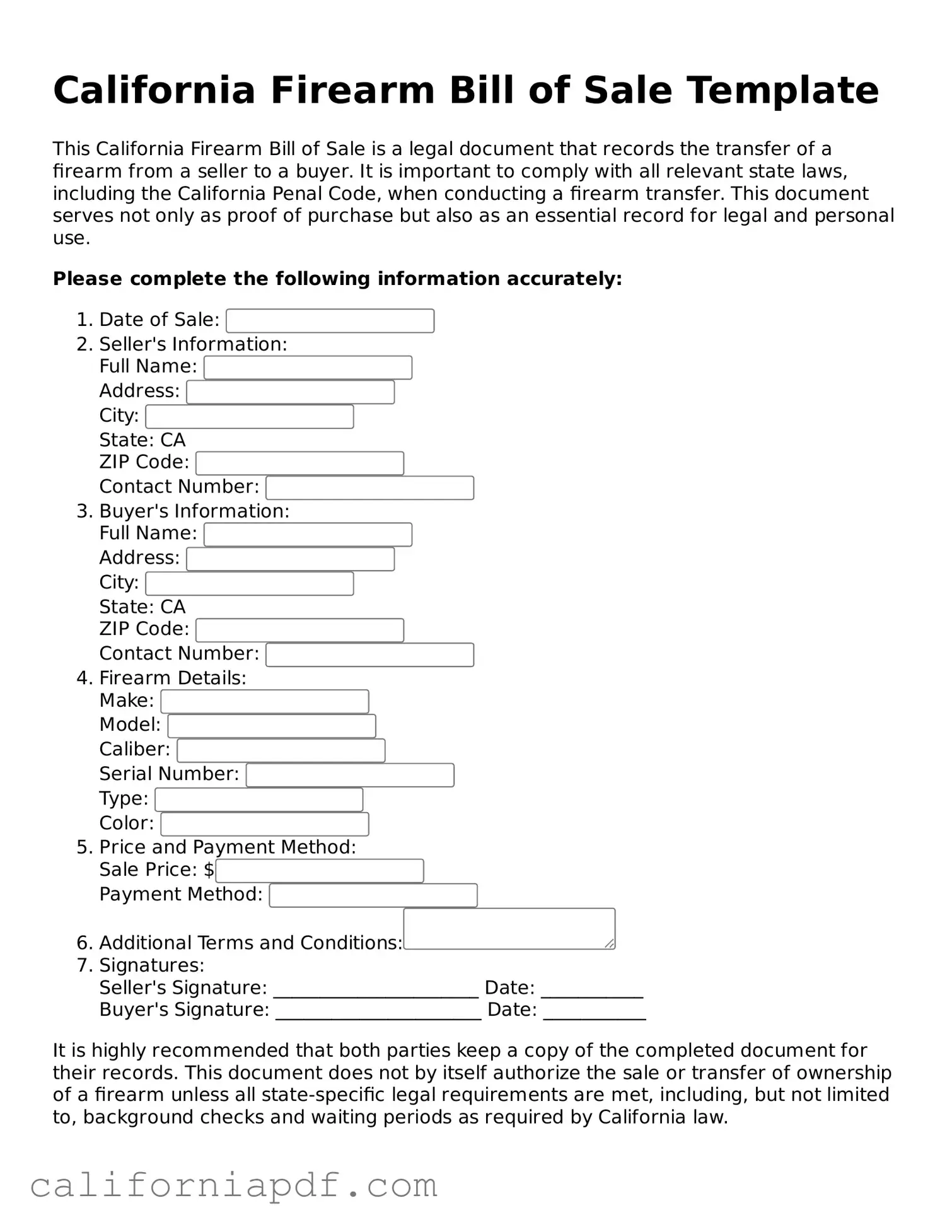The California Firearm Bill of Sale form is similar to the Motor Vehicle Bill of Sale form in that both serve as legal documents to officially transfer ownership from the seller to the buyer. They contain specific details about the item being sold (a firearm and a vehicle, respectively), the sale price, and the parties involved. Additionally, they may require notarization to validate the authenticity of the signatures and the transaction itself, reinforcing the legal protection for both parties.
Just like the Firearm Bill of Sale, the Boat Bill of Sale form is used to document the sale and transfer of ownership of a boat. Both documents include important information such as the make, model, year, and serial number of the item being sold, as well as the names and addresses of the seller and buyer. These forms act as receipts for the transaction and may be required for registration purposes with the appropriate state authorities.
Similarities can also be found with the General Bill of Sale form, which is a broad document used to transfer ownership of personal property from one party to another. While the Firearm Bill of Sale is specific to firearms, the General Bill of Sale can cover any type of personal property including electronics, furniture, and more. Both forms establish the terms and conditions of the sale, including the sale price and the date of the transaction, ensuring a clear agreement between the seller and buyer.
The Aircraft Bill of Sale form, while more specialized, shares common ground with the Firearm Bill of Sale by detailing a transaction specific to its field. Both forms protect legal interests by recording the essential information of the sale: make, model, identification numbers, and the parties involved. These details are crucial for registration and legal ownership transfer with relevant authorities, making both documents critical in their respective transactions.
Equine Bill of Sale forms, utilized for transactions involving horses, parallel the Firearm Bill of Sale in their necessity for clear, recorded terms about the sale. Such terms include the description of the animal (or firearm), the sale price, and the transfer of ownership. They both may also include conditions of the sale such as warranties or return policies, addressing the specifics of the transaction comprehensively.
The Firearm Bill of Sale and the Artwork Bill of Sale share the objective of transferring ownership of valuable items, where provenance and authenticity are critical aspects of the transaction. Both documents include detailed descriptions of the item being sold and certify the agreement between the seller and buyer, often including the item's condition and any specific authentication necessary, particularly vital for artwork and firearms due to their potential value and historical significance.
Comparable to the Firearm Bill of Sale is the Business Equipment Bill of Sale form, which documents the sale of items such as office furniture, computers, and other assets from one business entity to another. Both forms record pertinent transaction details like the description of the items sold, the sale price, and the parties' information to ensure a legally binding transfer of ownership.
Pet Bill of Sale forms, similar to the Firearm Bill of Sale, document the transfer of ownership of pets from the seller to the buyer. Key details included are the breed, date of birth, and health information of the pet, akin to the make, model, and serial number for firearms. These forms serve not only as proof of sale but also as important legal documents that detail the specifics of the care and ownership transition of living creatures or regulated items like firearms.
Lastly, the Real Estate Bill of Sale form, while dealing with the transfer of property, parallels the Firearm Bill of Sale by documenting a significant transaction between two parties. Although real estate transactions involve property rather than movable goods, both forms require detailed information about the property being transferred, the agreement terms, and the parties involved, underscoring the importance of a written record for legal documentation and protection purposes.
Like the Firearm Bill of Sale form, the Furniture Bill of Sale serves the purpose of documenting the sale and transfer of ownership of items within a home. Both forms detail the transaction, including a description of the item sold, the sale price, and the parties' information. These forms act as legal proof of the agreement, ensuring that the transfer is recognized and can be verified if necessary.
